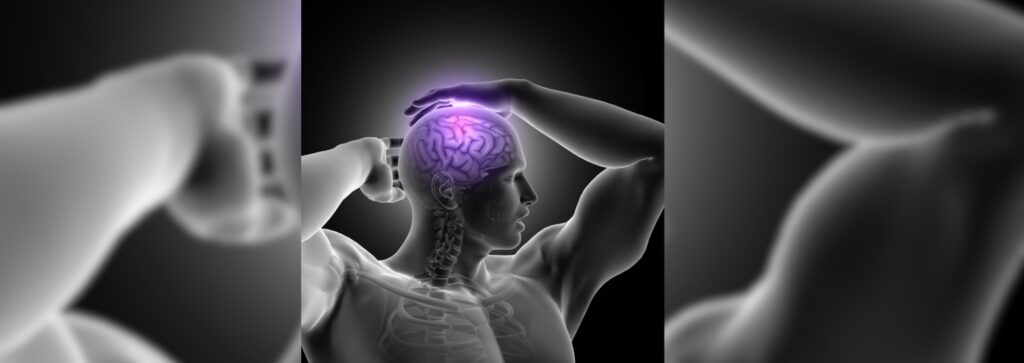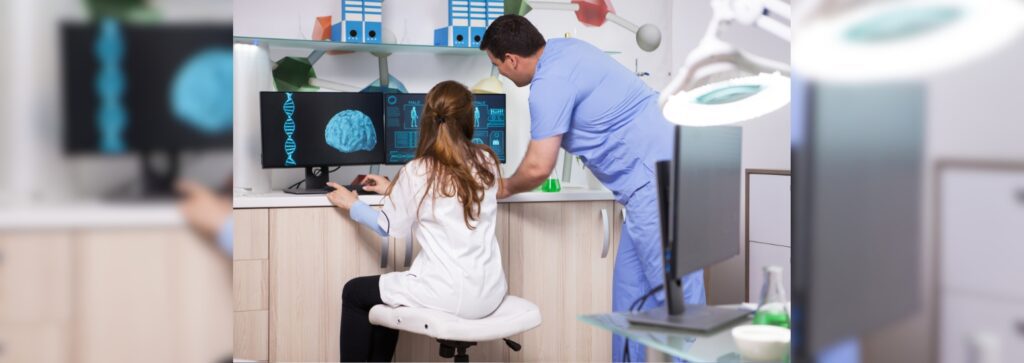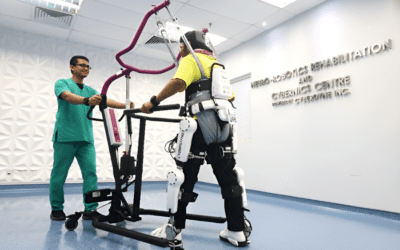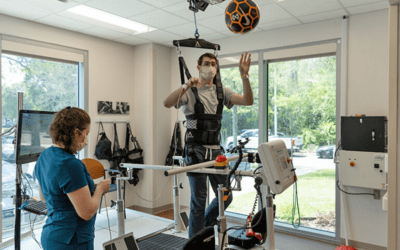What is FND – Functional neurological disorder?
Functional Neurological Disorder (FND) is a condition where people experience neurological symptoms, such as weakness, movement issues, or sensory problems, but without an identifiable structural or neurological disease that can explain them. Essentially, the nervous system is not functioning properly, even though no damage or disease is visible on traditional scans like MRIs or CTs.
Functional Neurological Disorder Symptoms can include:
- Motor symptoms: Weakness, tremors, abnormal movements, difficulty walking, or paralysis.
- Sensory symptoms: Numbness, tingling, or abnormal sensations.
- Seizure-like episodes: Also called “non-epileptic seizures,” they look like seizures but don’t show up on EEGs as typical seizures.
- Speech issues: Problems with speech, such as slurred or stammered speech.
The exact cause of FND is not fully understood, but it is thought to involve problems with the brain’s communication pathways, where the brain is sending incorrect signals to the body. Stress, trauma, and psychological factors are often linked to triggering or worsening FND, though it is recognized as a physical disorder.
Treatment usually involves a multidisciplinary approach, including physical therapy, psychotherapy, and sometimes medications.
FND vs Conversion Disorder:
Functional Neurological Disorder (FND) and Conversion Disorder are closely related, but there are some distinctions in how they are understood and classified.
- Definition:
- FND: A broad diagnosis for neurological symptoms that cannot be explained by structural or organic neurological disease. It includes a wide range of motor, sensory, and cognitive symptoms, and emphasizes that the brain is functioning abnormally, even though tests may not show any physical damage.
- Conversion Disorder: Traditionally considered a subtype of FND, conversion disorder is specifically associated with neurological symptoms that arise in response to psychological stress or trauma. It is characterized by the conversion of emotional or psychological distress into physical symptoms, such as paralysis, blindness, or non-epileptic seizures.
- Emphasis:
- FND: Focuses more on the functional aspect of the nervous system, meaning how the brain processes and sends signals. It includes a variety of symptoms not necessarily linked to stress or trauma.
- Conversion Disorder: Places more emphasis on the psychological origins of the symptoms, often seen as a response to emotional conflict or psychological stress.
- Symptom Overlap:
- Both FND and Conversion Disorder can present with similar neurological symptoms such as weakness, tremors, sensory disturbances, or seizures.
- However, Conversion Disorder often involves a clear emotional or psychological trigger (like trauma or significant stress), while FND may not always have such a direct psychological cause.
- Diagnosis and Treatment:
- FND is more commonly used as an overarching term in modern clinical practice and includes a wider spectrum of symptoms and causes. It recognizes that while psychological factors can play a role, they are not always present or necessary for diagnosis.
- Conversion Disorder treatment is more limited in scope and is specifically linked to psychological factors.
Treatment for both involves a combination of physical rehabilitation, psychological therapy (like cognitive-behavioral therapy), and sometimes medication. For conversion disorder, addressing underlying psychological issues is key.
In summary, Conversion Disorder is seen as a subset of FND, with a focus on symptoms stemming from psychological causes, while FND encompasses a broader range of neurological dysfunctions.

Types of FND – Functional neurological disorder:
Functional Neurological Disorder (FND) encompasses a variety of symptoms, and the condition can manifest in several distinct types based on the specific neurological functions that are affected.
Here are the main types of FND:
1. Motor Symptoms
- Functional Weakness or Paralysis: Sudden weakness or inability to move a part of the body, often affecting one side (similar to a stroke).
- Functional Tremor: Involuntary shaking or trembling that may vary in intensity and is often inconsistent with organic tremor patterns.
- Functional Dystonia: Sustained muscle contractions leading to abnormal postures or movements, often in the hands or feet.
- Functional Gait Disorder: Problems with walking or balance, where the person may have difficulty coordinating their movements, sometimes resulting in falls.
2. Sensory Symptoms
- Functional Numbness or Sensory Loss: Loss of sensation or altered sensation (e.g., numbness, tingling) in a part of the body that doesn’t align with typical neurological pathways.
- Functional Visual Symptoms: Changes in vision, including blurred vision or loss of vision that cannot be explained by eye or brain abnormalities.
- Functional Hearing Loss: Reduced hearing or deafness without a diagnosable physical cause.
3. Seizure-like Episodes
- Functional (Non-Epileptic) Seizures: Also known as psychogenic nonepileptic seizures (PNES), these episodes mimic epileptic seizures but are not caused by abnormal electrical activity in the brain. They can involve convulsions, loss of consciousness, or unresponsiveness.
4. Speech and Swallowing Disorders
- Functional Dysphonia/Aphonia: Problems with speaking, such as losing the ability to speak normally or complete loss of voice (aphonia) despite normal vocal cords.
- Functional Stuttering: Sudden onset of speech difficulties that resemble stuttering or slurred speech.
- Functional Dysphagia: Difficulty swallowing without an underlying physical cause, which can affect eating and drinking.
5. Cognitive Symptoms (Functional Cognitive Disorder – FCD)
- Memory Problems: Difficulty with memory recall or memory lapses that aren’t consistent with neurodegenerative diseases.
- Concentration Issues: Problems focusing, leading to cognitive fatigue or difficulty completing tasks.
- Brain Fog: A general sense of mental confusion or clouded thinking, which can affect daily functioning.
6. Functional Pain Syndromes
- Chronic Pain: Some patients with FND experience chronic pain (e.g., headaches, back pain) that cannot be fully explained by physical or structural abnormalities. This pain is often thought to be linked to altered nervous system function.
7. Functional Dizziness or Vertigo
- Functional Dizziness: A sensation of spinning or imbalance that does not correspond to any structural inner ear or brain problem. It often occurs in response to stress or anxiety.
Each of these FND subtypes reflects a dysfunction in the nervous system’s ability to regulate movement, sensation, or cognitive processing, even though no detectable structural damage is found. Treatment approaches often involve a combination of physical therapy, psychological therapy, and education about the conditions.

Diagnosis of Functional Neurological Disorder:
Diagnosing FND involves identifying neurological symptoms that do not align with structural damage or organic diseases like stroke or multiple sclerosis. Key steps in the diagnosis process include:
- Clinical Assessment: A detailed medical history and thorough neurological examination are critical. During this exam, doctors look for:
- Inconsistent symptoms: Symptoms may vary depending on attention, posture, or context. For instance, weakness in an arm may be present during specific tests but absent in others.
- Positive signs of FND: Certain signs are unique to FND, like:
- Hoover’s Sign: Weakness in one leg improves when the opposite leg is tested.
- Tremor Entrainment Test: Functional tremors may change frequency when the patient is asked to perform a rhythmic movement with another body part.
- Ruling Out Other Conditions: Tests such as MRI, CT scans, EEGs, and blood work are often done to exclude other neurological conditions. However, in FND, these tests typically come back normal.
- Identifying Functional Symptoms: Symptoms are real, but they don’t correspond to organic neurological disorders. Doctors need to explain to patients that the diagnosis is based on positive features of FND, rather than simply being a diagnosis of exclusion.
Functional Neurological Disorder Treatment:
The treatment of FND is multidisciplinary often involving neurologists, physiotherapists, psychologists, and sometimes psychiatrists. Treatment plans are individualized based on the specific type of FND and the symptoms a patient is experiencing.
- Education:
- Educating the patient about FND is essential to reduce fear and confusion. Understanding that FND is a real, physical disorder (not imagined or “all in the mind”) can help reduce anxiety and facilitate treatment.
- Physical Therapy:
- Physical rehabilitation is a cornerstone of treatment, especially for motor symptoms like weakness, tremors, or gait issues. A specialized physiotherapist helps patients regain normal movement patterns and rewire their brain’s motor functions. Gradual and consistent physical therapy helps improve strength, mobility, and function.
- For patients with non-epileptic seizures, techniques to regain control and manage episodes can be taught.
- Psychotherapy:
- Cognitive Behavioral Therapy (CBT) is one of the most common psychological treatments used. It helps patients recognize and change maladaptive thought patterns that may be influencing their symptoms.
- Trauma-focused therapy may be helpful if psychological trauma or stress plays a role in symptom onset, as is often seen in conversion disorder (a subset of FND).
- Mindfulness and stress management techniques can help manage symptoms and prevent exacerbations.
- Medication:
- There is no specific medication for FND, but medications may be prescribed to treat associated symptoms such as anxiety, depression, or chronic pain, which can contribute to or worsen the disorder.
- Antidepressants or anti-anxiety drugs may be used to address co-occurring mental health conditions.
- Antiepileptic medications are usually avoided for functional seizures, as these seizures are not due to abnormal electrical activity in the brain.
- Multidisciplinary Care:
- A team-based approach is often the most effective. This can involve neurologists working with physiotherapists, occupational therapists, psychologists, and other specialists.
- Family involvement in treatment can also be beneficial, especially for managing stress or identifying triggers.
- Lifestyle Modifications:
- Patients are often encouraged to develop a routine, engage in low-impact physical activities, and learn relaxation techniques.
- Addressing factors like sleep, nutrition, and physical fitness can also support recovery.
- Long-term Support:
- FND can be a chronic condition, so ongoing treatment and support may be necessary. Relapses can occur, and treatment often focuses on teaching patients how to manage symptoms if they return.
The goal of treatment is not just symptom reduction but helping patients regain control and function in daily life.
In conclusion, Functional Neurological Disorder (FND) is a complex condition where the brain and nervous system experience dysfunction without structural damage. Although its symptoms resemble those of serious neurological diseases, FND is unique in that it results from altered nervous system communication rather than organic injury.
Effective diagnosis requires a careful clinical examination, and treatment by the Functional Neurological Disorder Specialist often involves a multidisciplinary approach, including education, physical therapy, psychotherapy, and lifestyle adjustments. With the right care, many individuals with FND can improve their symptoms and quality of life.



